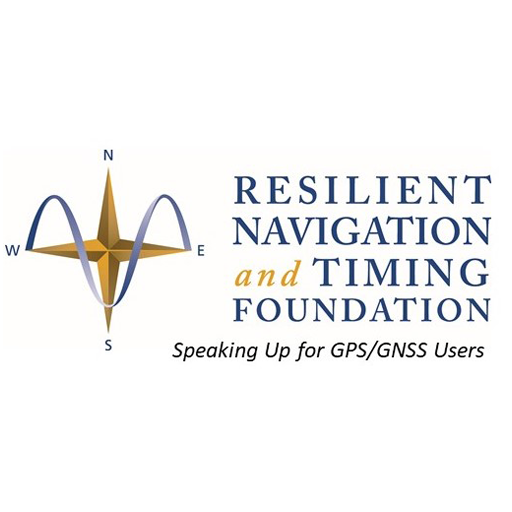Image: Shutterstock
Supply chain security has been a big focus of the Biden administration, almost from day one. As part of this, various agencies and departments have been seeking public comment on how to make different supply chains safer, more efficient and more resilient.
The Department of Transportation has an active request for comment about supply chains supporting freight and logistics operations. We think that GPS and PNT are critical parts of EVERY supply chain. Especially so for those related to transportation.
We provided comments, the first several pages of which are included below. You can find our entire submission here.
When it comes to public input on these sorts of things, the number of people addressing an issue is very important to the government.
If you agree that PNT is important and GPS vulnerability is a concern, we encourage you to comment also. No need to provide a detailed, multi-page analysis like we did. A couple sentences will do.
Here is the link to the Federal Register posting asking for comments on “America’s Supply Chains and the Transportation Industrial Base.” The comment period closes Monday, October 18th.
BTW – the Commerce Department also has a request for comment out concerning “Risks in the Information Communications Technology Supply Chain.” GPS and PNT have especially important roles there also. First because they underpin transportation and myriad industrial applications needed to produce such devices, and second because without them, once produced many information and communications devices wouldn’t work! We will be posting a response to this government request also and will share it with you.

7 October 2021
Response to Request for Public Comment
U.S. Department of Transportation (DOT)
Re: America’s Supply Chains and the Transportation Industrial Base
Federal Register Docket Number DOT-OST-2021-0106, Document Number 2021-19974
In your request for comment, you asked about supply chain issues within the freight and logistics sector to include:
- “Major risks to resilience,”
- “Technology issues, including information systems, cybersecurity risks, and interoperability, that affect the safe, efficient, and reliable movement of goods
- “Critical assets that the sector relies upon and their expected future availability,” and
- “Actions that DOT … could take under existing authorities…”
America’s acute over-reliance on highly vulnerable Global Positioning System (GPS) signals for positioning, navigation, and timing (PNT) services poses a major risk to resilience and is a technology and critical asset concern.
We urge DOT in the strongest possible terms to comply with the requirements of the National Timing Resilience and Security Act of 2018 and establish one or more national alternatives/ backups for GPS signals.
Criticality of GPS /PNT Services to Freight and Logistics
Department of Transportation studies and analyses have repeatedly shown America’s near exclusive reliance on GPS for PNT services to be a major risk to the safety and resilience of U.S. transportation systems. These are, of course, essential for freight and logistics operations.
When GPS signals are not available, or worse, provide hazardously misleading information, freight and logistics slow down, become less efficient, are more accident prone, and are less reliable.[1]
Many, if not all, freight and logistics systems and organizations are now structured around a presumption that GPS will be available. Hence, most companies no longer have sufficient capital equipment or staff to operate without GPS at more than a fraction of current capacity. Some, such as Uber and Lyft, will be out of business completely during a GPS disruption.
GPS timing and location information also underpin a wide variety of network, communications, and industrial systems that support freight and logistics. Enclosure (1) discusses one example of this dependency. Dependencies across sectors are why in 2015 the Assistant Secretary for Infrastructure Security at the Department of Homeland Security called GPS “A single point of failure” for critical infrastructure.”
Freight and Logistics Vulnerabilities and Risks Related to Reliance on GPS
Most all PNT services in the United States are sourced directly or indirectly from GPS.
GPS is highly vulnerable to a wide variety of threats. The level of risk from each of these threats is a matter of subjective evaluation and changes over time as technology and global relations develop. That said, all the various threats are widely acknowledged and have been documented by the government. When the cumulative risk from all threats is considered, the need for prompt action is clear and unavoidable.
Enclosure (2) discusses each of the following threats in more detail:
- Denial of service (jamming) due natural, inadvertent, or intentional interference with GPS’ exceptionally weak signals.
- Signal deception (spoofing) resulting in hazardously misleading information to users and/or insertion of false data to systems and records.
- Denial of service due to interference from severe solar activity (coronal mass ejections). This could last several days.
- Damage, disabling, or destruction of GPS satellites and systems from:
- Cyberattack
- Kinetic or directed energy attack
- Debris
- Coronal mass ejection
Note: Freight and logistics operations are particularly susceptible to malicious use of jamming and spoofing equipment. As one example, the government of Mexico has said that GPS jammers are used in 85% of cargo truck thefts. While we have no similar statistics for the U.S., we have seen warnings to industry about the jammer and spoofing threats from U.S. law enforcement.
Recommended Actions to Reduce Risks Related to Reliance on GPS and Improve Freight and Logistics Security, Resilience and Reliability:
The President’s National Space-based Positioning, Navigation, and Timing Advisory Board has long advocated a holistic approach to protecting GPS signals and users. It involves:
- Protecting GPS signals through active frequency management. This includes sufficient laws and regulations, interference detection, and enforcement resources.
- Toughening users by encouraging adoption of more resilient equipment and, when appropriate, requiring its use.
- Augmenting GPS signals with other PNT sources
Active management of a holistic approach to PNT resilience by the federal government is urgently needed. Executive Order 13905 (20 February 2020), “Strengthening National Resilience Through Responsible Use of Positioning, Navigation, and Timing Services,” took some steps toward implementing such an approach. These are necessary but far from sufficient.
While the administration is making some efforts to protect signals from interference and to encourage “toughened” more resilient receivers, nothing is underway to establish one or more alterative PNT sources to work alongside and reinforce GPS. This despite numerous studies and several decisions by the federal government to do so (see enclosure 3).
Like GPS, alternatives should include systems that are wireless, easily accessed and adopted, and reach all parts of the nation. This will:
- Provide users alternative PNT during local and widespread GPS disruptions
- Help stabilize and validate GPS services when used in the same receiver. This will improve overall PNT utility for current and future applications.
- Help protect GPS signals and satellites by making them less attractive targets
Establishing a backup capability for GPS timing signals is required by statute.
The National Timing Resilience and Security Act (NTRSA) of 2018 requires establishment of a terrestrial backup capability for GPS timing, along with any other systems (space-based or terrestrial) as determined by a technology demonstration program. The Act required this be in place by December 2020.
No monies have been appropriated by Congress to fund such a project. Neither did the Trump administration request any funds.
In its first budget submission the Biden administration did not request any funds and went so far as to propose repeal of the NTRSA.
To the best of our knowledge, nearly three years after its passage, the executive branch has taken no action to comply with NTRSA.
NOTE: For a timing system to serve mobile users independent of GPS, it must also provide a basic level of location information. Thus, complying with NTRSA will support timing and, at a basic level, location for freight and logistics operations.
Our Top Recommendation: Comply with the law. – Establish one or more timing backup capabilities for GPS as required by NTRSA.
The resulting timing and related location information will greatly improve the resilience, reliability, and safety of freight and logistics systems and operations that access the new capability.
While establishing such a capability may seem to be a formidable and expensive task for any federal agency, it need be neither.
As was made clear in a recent Department of Transportation report on an alternate PNT technology demonstration program, the needed technologies are mature and available. Also, the government can access the services these technologies provide through commercial contracts. This will speed implementation by obviating the need for an expensive and cumbersome government capital acquisition program. It can also minimize total costs to the government.
Enclosure (4) is our white paper “A Resilient National Timing Architecture.” It discusses in some detail how NTRSA could be relatively quickly and inexpensively implemented.
Mr. Dana A. Goward
President, RNT Foundation
[1] One possible exception are some location systems used inside warehouses and in other very confined locations for storing and retrieving materials. Some of these systems operate independently of GPS, though others use enhanced GPS and fail when it is not available.


